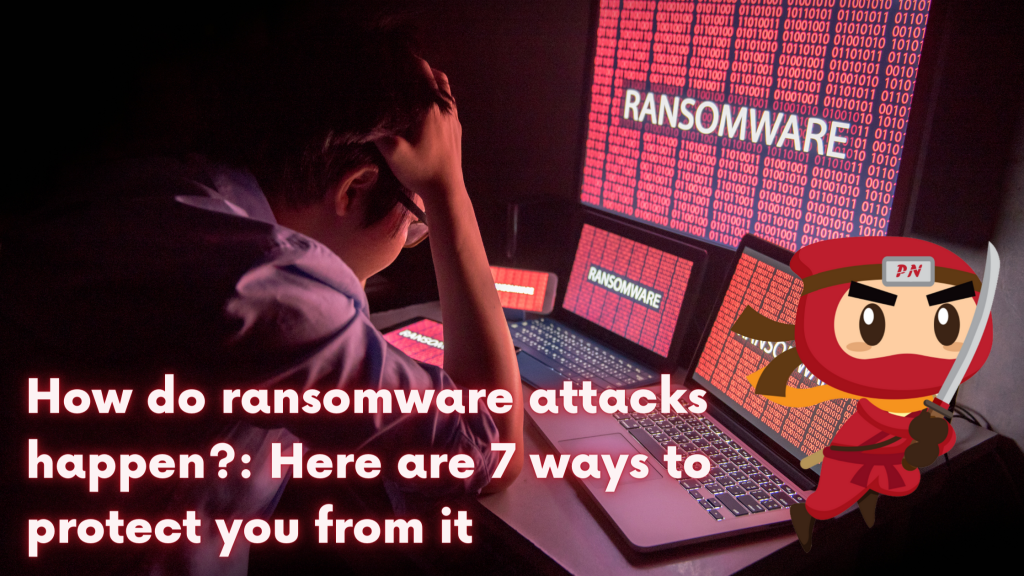
How do ransomware attacks happen?
Recently, with stricter regulations imposed, awareness campaigns done, and employee training undergone, there has been a decline in ransomware attacks to deal with. However, one must not be lenient as ransomware is still a serious threat. How ransomware happens is no longer a mystery, and there are ways to protect you from it. But before that, let’s first define what ransomware is.
Ransomware is a variation of malware (malicious software) that encrypts files and documents. It can infect a single unit of a computer or even an entire network, including a company’s servers. From the word itself, the perpetrator demands a ransom from the victim in exchange for a “decryption key” to regain access.
In a successful ransomware attack, the cybercriminals typically provide instructions for communication and the amount to be paid to get the decryption key. Depending on the organization, the cost ranges from thousands of dollars to millions, all paid in Bitcoin.
Also Read: The DNC Singapore: Looking At 2 Sides Better
There are a lot of possible entries for ransomware to infiltrate one’s computer, and one of the most common delivery systems is phishing scam. In phishing scams, cybercriminals mimic the genuine email addresses and contents of a legitimate businesses, and they will send it to unsuspecting victims with an attachment.
Once the users click the link or open the attachment, the malware attached to that link or attachment will now take over the victim’s computer, especially when the attachment has built-in social engineering tools that trick users into allowing them administrative access.
In a more aggressive form of ransomware like NotPetya, it does not need to trick users to infect the user’s computer. What it does is exploit security loopholes to infect the user’s machine.
There are several things malware might do to computer, but the most common one is data encryption. In another form, the cybercriminals claim that they are from a law enforcement agency and are demanding a fine for pornography in the computer, or else the computer will be shut down remotely.
Furthermore, another form would be through leakware or doxware, where there will be no encryption of files or shutting down of computers. What happens is the hackers will scout through your files and search for sensitive information or data against you. When they find something, they will threaten you to pay a fine, or else these cybercriminals will disclose everything they have discovered.
Usually, ransomware occurs when businesses fail to follow common cyber security frameworks that are put to safeguard them from unwanted attacks, such as:
Cybercriminals use a variety of attack vectors or approaches in accessing your network by finding and exploiting vulnerabilities from it. Effectively preventing ransomware is to understand these attack vectors and learn from them in combating future attacks. Aside from that, the organization must be proactive in their cyber security posture and adopt these 7 ways to protect them from ransomware attacks:
There are a lot of defensive steps against ransomware an organization can adopt, and the following are some of the practices that these businesses should be practicing regularly:
Also Read: 3 Reasons Why You Must Take A PDPA Singapore Course
Importance of Efficient Access Controls that every Organisation in Singapore should take note of. Enhancing…
Prioritizing Security Measures When Launching a Webpage That Every Organisation in Singapore should take note…
Importance of Regularly Changing Passwords for Enhance Online Security that every Organisation in Singapore should…
Comprehensive Approach to Data Protection and Operational Integrity that every Organsiation in Singapore should know…
Here's the importance of Pre-Launch Testing in IT Systems Implementation for Organisations in Singapore. The…
Understanding Liability in IT Vendor Relationships that every Organisation in Singapore should look at. Understanding…
This website uses cookies.